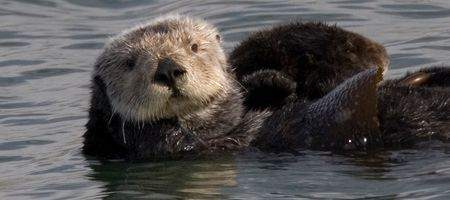Sea otters are an up-to-now unsuspected ally in the fight against global warming, say scientists from UC Santa Cruz.

By munching on sea urchins, they allow kelp forests to prosper and absorb large amounts of CO2 from the atmosphere – as much as 12 times as much as if there were no sea otters present.
The theory is outlined in a paper released online September 7, 2012 in Frontiers in Ecology and the Environment by lead authors UC Santa Cruz professors Chris Wilmers and James Estes.
“It is significant because it shows that animals can have a big influence on the carbon cycle,” says assistant professor of environmental studies Chris Wilmers.
The team examined 40 years of data on otters and kelp bloom from Vancouver Island to the western edge of Alaska’s Aleutian Islands, comparing kelp density with and without otters.
When otters are around, they found, sea urchins hide in crevices and eat kelp scraps. When they aren’t, the sea urchins graze voraciously on living kelp. And kelp is particularly efficient at sequestering CO2 from the atmosphere through photosynthesis.
The scientists aren’t calling for a mass program to fill the oceans with otters. But they point out that their research does show how managing animal populations can affect ecosystems’ abilities to sequester carbon.
“Right now, all the climate change models and proposed methods of sequestering carbon ignore animals. But animals the world over, working in different ways to influence the carbon cycle, might actually have a large impact,” says Wilmers.
“If ecologists can get a better handle on what these impacts are, there might be opportunities for win-win conservation scenarios, whereby animal species are protected or enhanced, and carbon gets sequestered.”
They estimate that the CO2 removed from the atmosphere via the otter-kelp link could be worth between $205 million and $408 million on the European Carbon Exchange.






